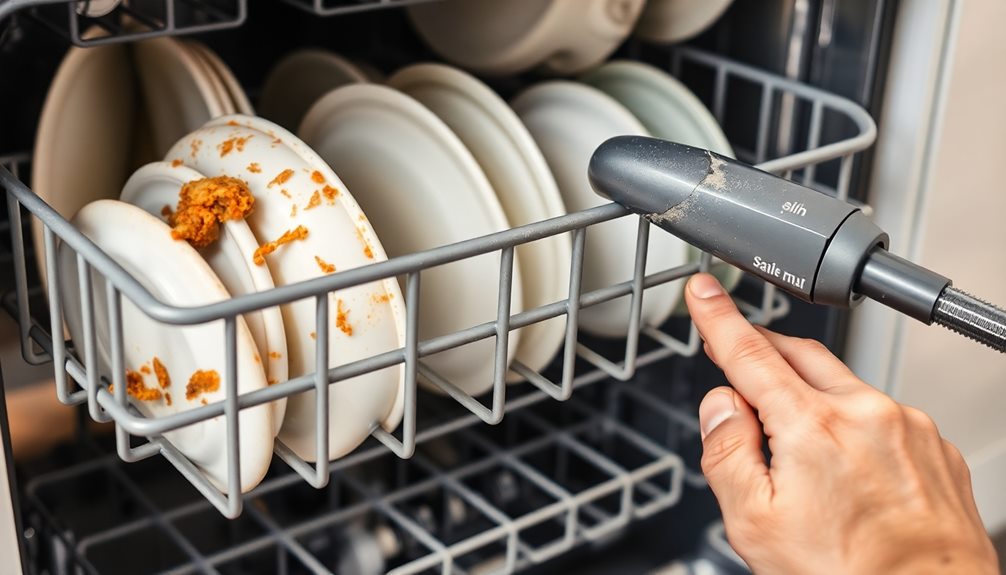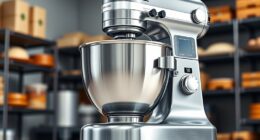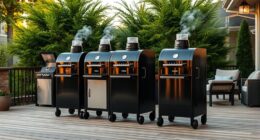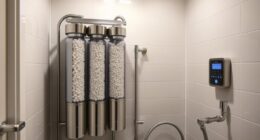Ever thought about whether Japanese appliances will function properly in the US? We have all the information you need. This article will explore the variations in voltage and frequency, the compatibility of electrical plugs, and the use of step-up and step-down transformers.
We’ll also discuss how to adapt Japanese appliances to US standards and explore the differences between converters and transformers. So, if you’re looking for information on using Japanese appliances in the US, keep reading!
Key Takeaways
- Japanese appliances operate on a voltage of 100 volts, while the US uses 120 volts, resulting in a voltage difference that can affect the functionality of Japanese appliances in the US.
- Japan operates on a frequency of 50 Hz, while the US operates on a frequency of 60 Hz, which can also impact the performance of Japanese appliances in the US.
- To adapt Japanese appliances to US standards, voltage converters and frequency adapters can be used to adjust the voltage and frequency.
- Besides voltage and frequency differences, Japanese appliances also require an adapter or converter to fit into US electrical outlets due to the unique two-prong plug design used in Japan.
Voltage and Frequency Differences
In our experience, voltage and frequency differences pose a challenge when using Japanese appliances in the US.
Japan operates on a voltage of 100 volts, whereas the US uses 120 volts. This means that Japanese appliances may not receive the necessary voltage to operate at full capacity in the US, resulting in reduced performance or even damage.

Additionally, there’s a frequency compatibility issue to consider. Japan operates on a frequency of 50 Hz, while the US operates on a frequency of 60 Hz. This difference can also affect the functionality of Japanese appliances in the US.
To overcome these challenges, it’s crucial to adapt the voltage and frequency of Japanese appliances to match the US standards using voltage converters and frequency adapters. By doing so, the appliances can work seamlessly in the US without any issues.
Electrical Plug Compatibility
When it comes to electrical plug compatibility between Japanese appliances and the US, there are a few key points to consider.
First, plug shape differences can be a major issue as Japan uses a unique two-prong plug design.

Second, even if the plug fits, voltage compatibility can pose a problem as Japan operates on a 100V system compared to the US’s 120V system.
As a result, using Japanese appliances in the US may require the use of an adapter or converter to ensure proper functionality.
Plug Shape Differences
We often encounter compatibility issues with the electrical plug shape when using Japanese appliances in the US. The plug shape in Japan differs from the one used in the US, which can cause problems when trying to connect Japanese appliances to American outlets.
The Japanese plug has two parallel flat pins, while the American plug has two flat pins in a V-shape. This difference in plug shape means that Japanese appliances can’t be directly plugged into American outlets without an adapter.

It’s important to note that plug shape compatibility is just one aspect of using Japanese appliances in the US. Voltage and frequency conversion are also crucial considerations, as Japan operates on a different electrical system than the US.
Voltage Compatibility Issues
Although Japanese appliances have plug shape compatibility issues in the US, another crucial consideration is voltage compatibility. Japanese appliances are designed to work with a voltage of 100 volts, while the standard voltage in the US is 120 volts. This voltage difference can cause several problems if not addressed properly.
- Voltage conversion: To use Japanese appliances in the US, a voltage converter is needed. This device converts the voltage from 120 volts to 100 volts, ensuring that the appliance receives the correct power supply.
- Power consumption: Japanese appliances are designed to operate with lower power consumption compared to their US counterparts. This means that using a Japanese appliance in the US without a voltage converter can lead to overheating and damage to the appliance.
- Safety concerns: Using a Japanese appliance with the incorrect voltage can pose a safety risk, including the possibility of electrical fires or electric shocks. It’s important to ensure that the voltage conversion is done properly to prevent any accidents.
Adapter or Converter Needed
Typically, we frequently require an adapter or converter for Japanese appliances to be compatible with electrical plugs in the US. This is due to the difference in electrical plug shapes and voltage systems between the two countries.
Japanese appliances are designed to work with a 100V voltage system, while the US uses a 120V system. Therefore, an adapter is needed to physically connect the Japanese appliance to the US electrical outlet. The adapter simply changes the shape of the plug to fit into the US socket.
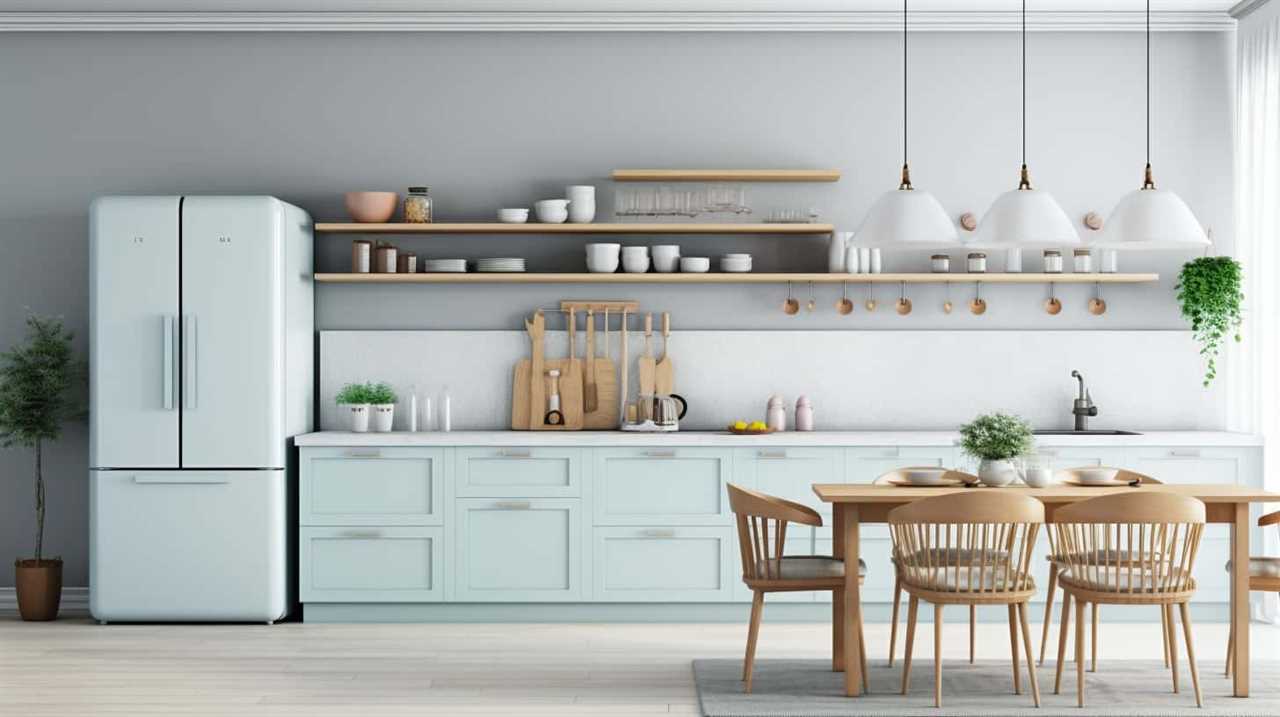
However, it’s important to note that using an adapter doesn’t convert the voltage. If the Japanese appliance isn’t compatible with the higher voltage in the US, a voltage converter is also needed. The converter will step down the voltage to ensure the safe operation of the appliance.
Step-Up and Step-Down Transformers
To ensure compatibility between Japanese appliances and the US electrical system, it’s necessary to employ step-up and step-down transformers. These transformers play a crucial role in converting the voltage to match the requirements of the appliances. Here are three important uses and the importance of voltage conversion:
- Step-Up Transformers: These transformers are used to raise the voltage from a lower level to a higher level. They’re commonly used to power appliances that require higher voltage than what’s available in the US. By stepping up the voltage, these transformers enable the proper functioning of Japanese appliances in the US.
- Step-Down Transformers: On the other hand, step-down transformers are used to lower the voltage from a higher level to a lower level. They’re essential for powering Japanese appliances in the US, as the US electrical system operates at a lower voltage than the Japanese system. Step-down transformers ensure that the appliances receive the appropriate voltage for safe and efficient operation.
- Importance of Voltage Conversion: Voltage conversion is crucial because electrical appliances are designed to operate within specific voltage ranges. Using appliances with the wrong voltage can result in damage, malfunction, or even fire hazards. Step-up and step-down transformers provide the necessary voltage conversion to ensure the safe and proper functioning of Japanese appliances in the US.
Adapting Japanese Appliances to US Standards
Continuing the discussion on voltage conversion, we found that adapting Japanese appliances to US standards involves making necessary adjustments to ensure compatibility and safe usage. One important aspect to consider is adapting the plug shape to fit US outlets. Japanese appliances typically use a two-pin plug, while US outlets require a three-pin plug. This can be easily resolved by using a plug adapter or purchasing a new power cord with a US plug.
Another key consideration is voltage compatibility. Japan operates on a 100V electrical system, while the US uses a 120V system. This means that Japanese appliances may not function optimally or may even be damaged if directly plugged into US outlets. To address this, a step-down transformer can be used to lower the voltage to the appropriate level.

In summary, adapting Japanese appliances to US standards involves adjusting the plug shape and ensuring voltage compatibility to ensure proper functionality and safety.
| Plug Shape | Voltage Compatibility |
|---|---|
| Two-pin | Step-down transformer |
| Three-pin |
Converter Vs. Transformer: Which One Do You Need
When it comes to using Japanese appliances in the US, one important consideration is whether you need a converter or a transformer. Understanding the difference between the two is crucial in ensuring the proper functioning and safety of your appliances.
A converter is used to change the shape of the electrical plug, while a transformer is used to adjust the voltage.
Making the right choice depends on the voltage compatibility of your appliances and the electrical system in your home.
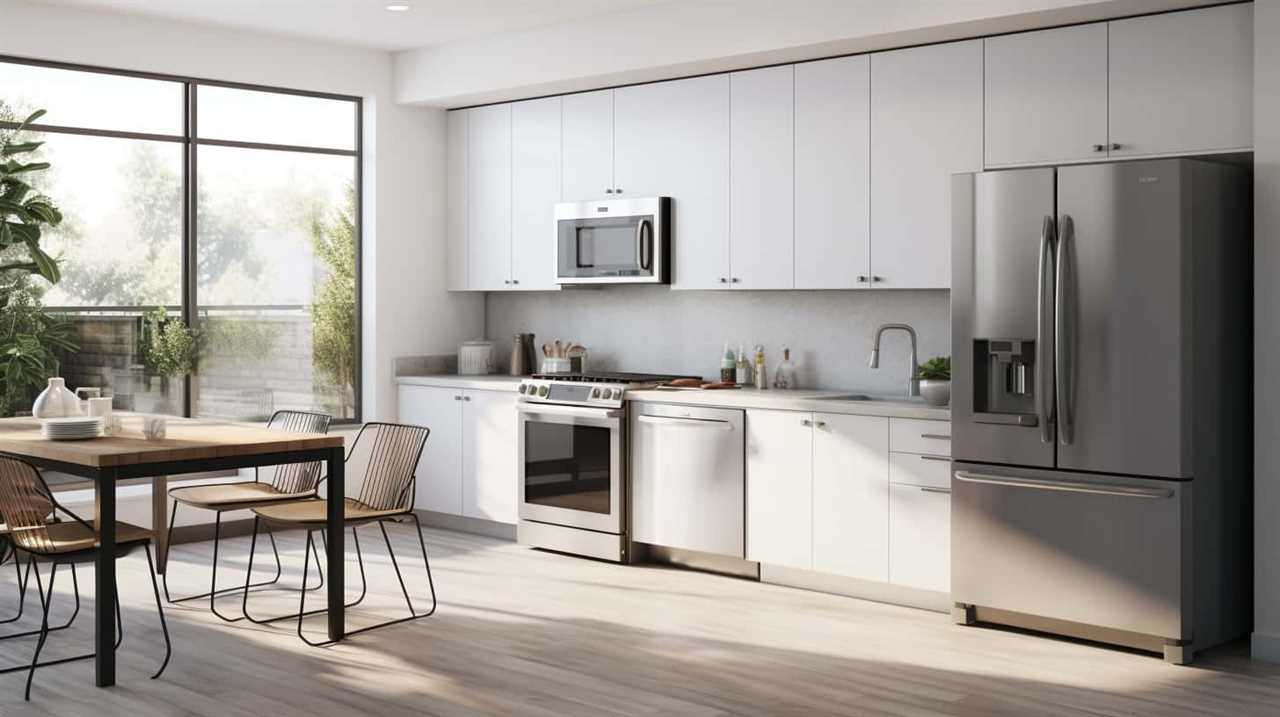
Converter or Transformer
As we delve into the topic of converter or transformer, it’s important to understand the distinction between these two devices and determine which one we need for Japanese appliances to work in the US.
- Converter types: Converters are devices that change the voltage of an electrical appliance to match the voltage of the country it’s being used in. There are two main types of converters: step-up converters, which increase the voltage, and step-down converters, which decrease the voltage.
- Voltage conversion process: When using a converter, the voltage from the electrical outlet is converted to the appropriate voltage required by the Japanese appliance. This allows the appliance to function properly and prevents any damage caused by voltage incompatibility.
- Determining the need: To determine whether a converter or transformer is needed for a Japanese appliance to work in the US, it’s important to check the voltage requirements of the appliance and compare it to the voltage supplied by the US electrical system. If the appliance requires a different voltage, a converter or transformer should be used to ensure proper functioning and prevent damage.
Voltage Compatibility Explained
To determine the type of device needed for voltage compatibility between Japanese appliances and the US, we must consider whether a converter or transformer is required.
When it comes to voltage converters, there are two main options: step-up converters and step-down converters. Step-up converters are used to increase the voltage output, while step-down converters are used to decrease it. These converters can be useful in situations where the voltage requirements of the appliance are significantly different from the voltage supplied by the power source. However, it’s important to note that not all converters are compatible with the voltage requirements of every country. Therefore, it’s necessary to choose a converter that’s specifically designed for use in the US or any other country you plan to use it in.
It’s also important to check the compatibility of the converter with the specific appliance you’re using. In some cases, a transformer may be a better option. Transformers are used to change the voltage of the power supply, either stepping it up or stepping it down. They’re generally more versatile and can be used with a wider range of appliances. However, transformers are typically larger and heavier than converters, and they may also be more expensive.
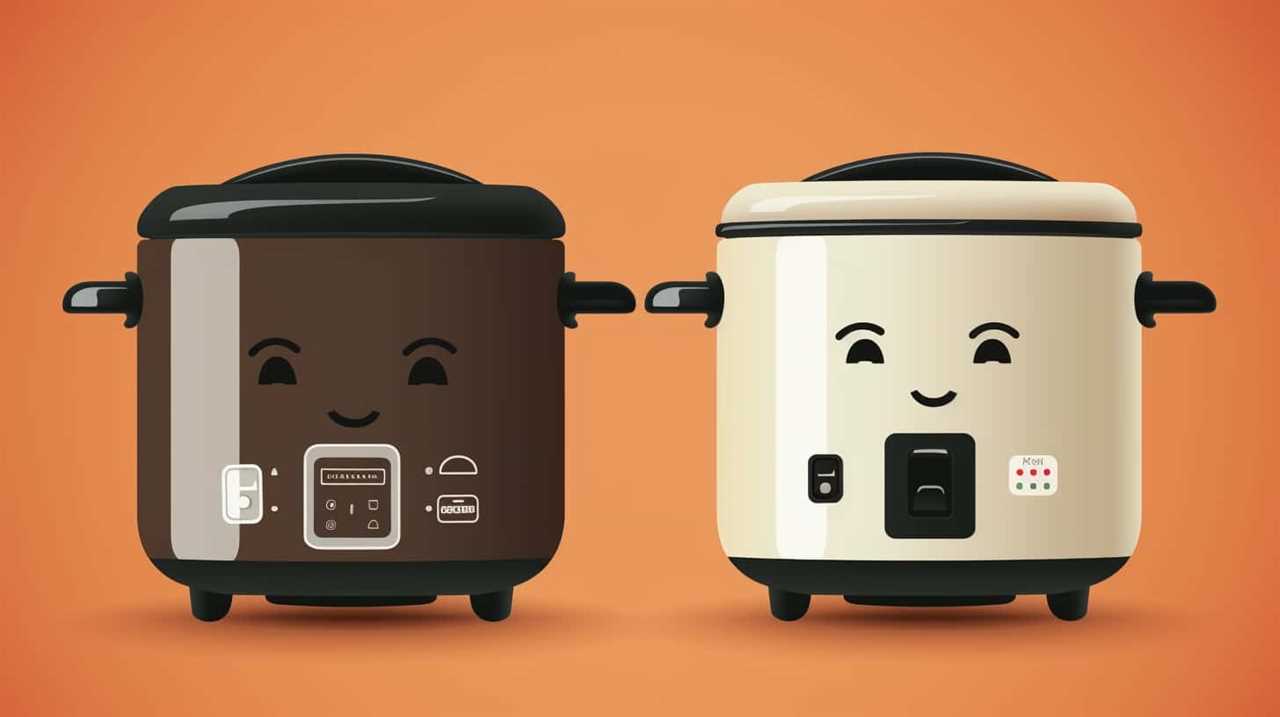
It’s important to consider the specific voltage requirements of your appliances and choose the appropriate device accordingly.
Choosing the Right Option
In our discussion about voltage compatibility between Japanese appliances and the US, let’s now explore the question of which option is the right one for you: a converter or a transformer.
- Converter: A converter is a device that adapts voltage from one level to another. It’s ideal for electronic appliances that are compatible with the US voltage but have different plug shapes. It converts the voltage to match the US standard while also providing the necessary plug compatibility.
- Transformer: A transformer, on the other hand, is used when the voltage of the Japanese appliance isn’t compatible with the US standard. It changes the voltage level to match the requirements of the appliance.
- Choosing the Right Option: To determine whether you need a converter or a transformer, consider the voltage requirements of your appliance and check if it’s compatible with the US standard. If it is, a converter will suffice. However, if the voltage isn’t compatible, you’ll need a transformer.
Understanding the difference between a converter and a transformer is crucial in ensuring the successful operation of your Japanese appliances in the US. Now, let’s move on to the next section, where we’ll discuss safety considerations for using Japanese appliances in the US.
Safety Considerations for Using Japanese Appliances in the US
We need to consider the safety implications of using Japanese appliances in the US.
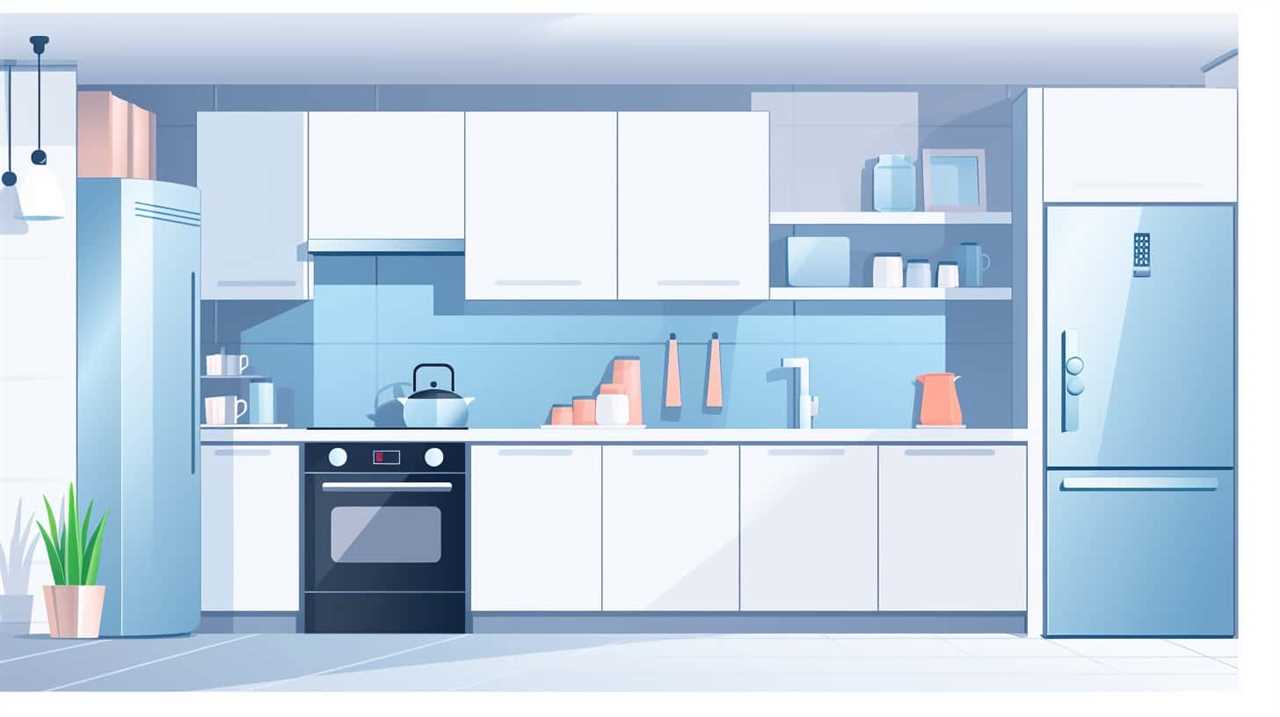
One important aspect to consider is voltage conversion. In Japan, the standard voltage is 100 volts, while in the US, it’s 120 volts. This means that Japanese appliances designed for 100 volts may not function properly or could even be damaged when used in the US without a voltage converter. It’s essential to ensure that the appliance can handle the higher voltage before plugging it in.
Another consideration is safety standards. Japanese appliances are designed to meet the safety standards set by the Japanese government, which may differ from those in the US. It’s important to verify that the appliance meets the necessary safety standards to avoid any potential hazards or electrical issues.
Common Japanese Appliances Used in the US
Continuing our exploration of Japanese appliances in the US, let’s delve into the common Japanese appliances that are widely used here. These appliances are designed to cater to the needs and preferences of American consumers while retaining their Japanese quality and reliability.
Here are three common Japanese appliances used in the US:
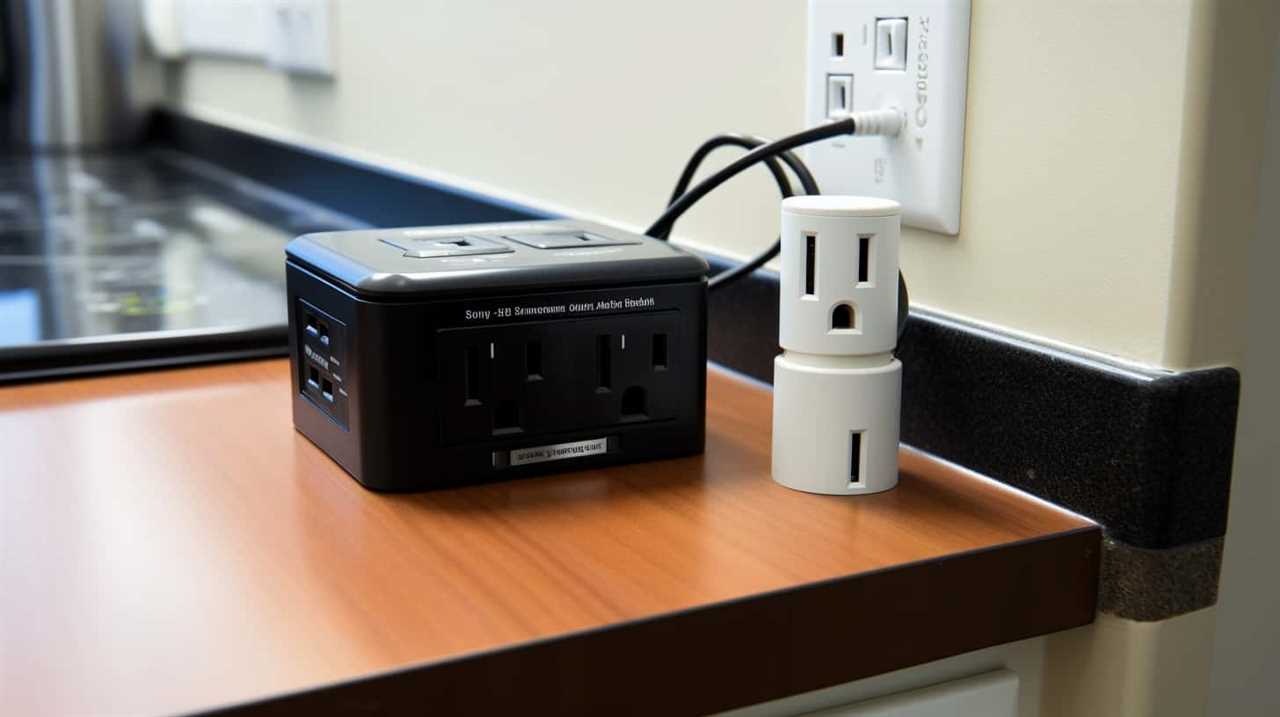
- Washing machines: Japanese washing machines are known for their advanced features such as energy efficiency, gentle fabric care, and customizable wash cycles. They often come with language settings that allow users to choose their preferred language for ease of use.
- Rice cookers: A staple in Japanese households, rice cookers have gained popularity in the US as well. These appliances ensure perfectly cooked rice every time, with options for different rice varieties and textures. Some models also offer language settings to accommodate user preferences.
- Air conditioners: Japanese air conditioners are renowned for their powerful cooling capabilities and energy efficiency. They provide precise temperature control and often come with warranty coverage to ensure peace of mind for consumers.
When purchasing Japanese appliances in the US, it’s important to check the warranty coverage to ensure support and assistance in case of any issues.
Tips for Purchasing Japanese Appliances for US Use
When purchasing Japanese appliances for use in the US, there are several important factors to consider.
Firstly, it’s crucial to understand the voltage compatibility between the two countries, as Japan uses a different voltage system than the US.
Secondly, language settings and manuals should be taken into account, as there may be language barriers when operating the appliances.
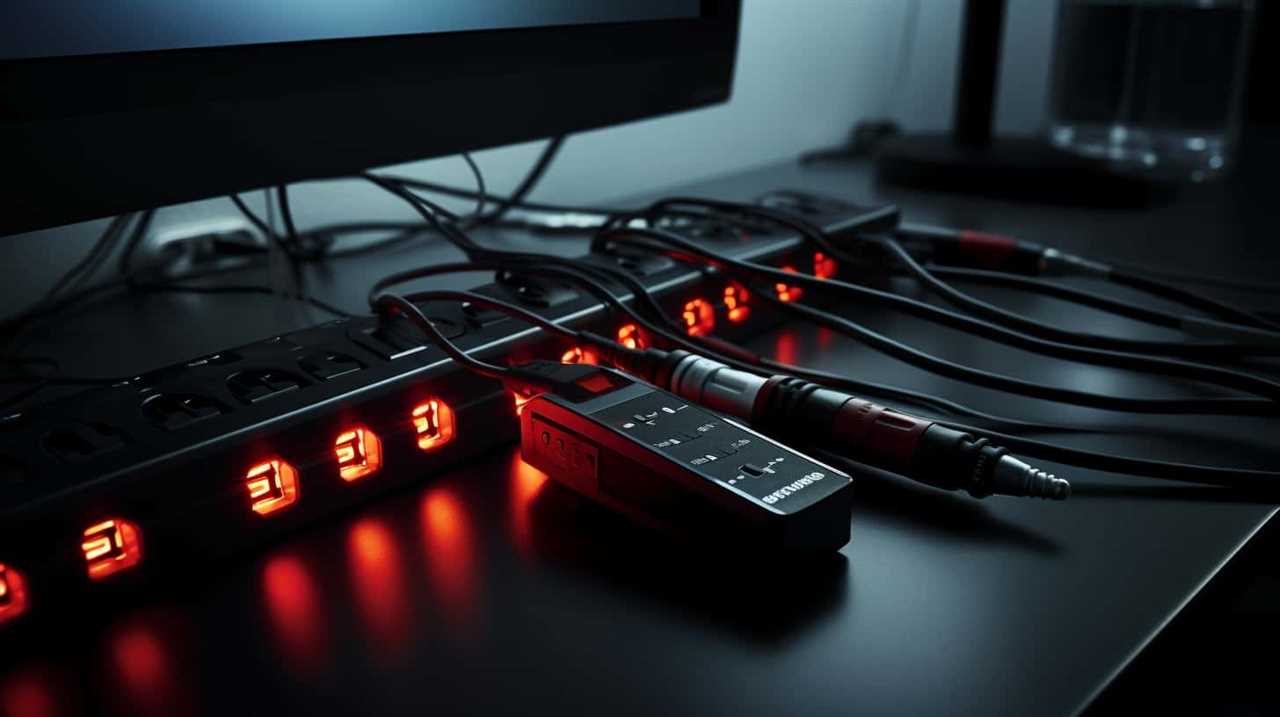
Lastly, it’s important to consider warranty coverage, as it may differ between countries and impact the overall cost and support for the appliances.
Voltage Compatibility Explained
Let’s dive into the topic of voltage compatibility and explore some helpful tips for purchasing Japanese appliances for use in the US. Understanding voltage compatibility is crucial when using appliances from different countries. Here are three key points to keep in mind:
- Voltage Converters: Since Japan operates on a 100-volt electrical system, while the US uses a 120-volt system, you may need a voltage converter to ensure your Japanese appliances work properly in the US. These converters adjust the voltage to match the requirements of your appliance.
- Power Compatibility: Before purchasing a Japanese appliance, check its power compatibility. Many appliances have a voltage range indicated on their labels or in their manuals. If the appliance falls within the US voltage range, you may not need a converter.
- Consider Alternatives: In some cases, it may be more cost-effective to purchase US versions of Japanese appliances. These appliances are designed to work directly with the US electrical system, eliminating the need for voltage converters.
Understanding voltage compatibility is just the first step in successfully using Japanese appliances in the US. Now, let’s move on to the next section, where we’ll discuss language settings and manuals.
Language Settings and Manuals
We found several helpful tips for purchasing Japanese appliances for use in the US, starting with the importance of checking the language settings and manuals. When buying a Japanese appliance, it is crucial to ensure that the device has language settings compatible with English or your preferred language. Some appliances may only have Japanese language options, making it difficult to navigate and understand the functions. Additionally, it is essential to have access to an English manual or instructions for troubleshooting and maintenance. Without proper documentation, it can be challenging to resolve issues or perform necessary maintenance tasks. To help you better understand the importance of language settings and manuals, we have provided a table below showcasing the key aspects to consider when purchasing Japanese appliances for US use.

| Language Settings | Manuals |
|---|---|
| Check if the appliance has language settings compatible with English or your preferred language. | Ensure that an English manual or instructions are included with the appliance. |
| Having language options in your preferred language makes it easier to navigate and understand the functions. | Access to an English manual allows for troubleshooting and maintenance tasks to be easily performed. |
Warranty Coverage Considerations
Continuing our exploration of purchasing Japanese appliances for use in the US, let’s now delve into the crucial aspect of warranty coverage considerations. When buying Japanese appliances for use in the US, it’s important to take into account the warranty coverage. Here are three key factors to consider:
- Compatibility: Japanese appliances often operate on a different voltage than what’s standard in the US. Therefore, it’s important to check if the warranty covers any damages that may occur due to using a voltage converter.
- International Warranty: Some manufacturers offer international warranty coverage, which means that even if you buy the appliance in Japan, the warranty will still be valid in the US. This can provide peace of mind when purchasing Japanese appliances.
- Service Centers: Check if there are authorized service centers in the US that can provide warranty repairs. Having a nearby service center can save time and money in case any issues arise.
Considering these warranty coverage factors will ensure that you make an informed decision when purchasing Japanese appliances for use in the US.
Finding Japanese Appliances With Dual Voltage
When looking for Japanese appliances that can be used in the US, it’s important to search for models with dual voltage capabilities. Dual voltage appliances have the ability to work with both the Japanese voltage system (100 volts) and the US voltage system (120 volts). This ensures that the appliances can operate efficiently and safely in the US without the need for voltage converters or transformers.
Finding affordable options with dual voltage capabilities can be quite challenging, as not all Japanese appliances are designed with this feature. However, there are a few reliable places to buy these appliances. Online retailers like Amazon and eBay often have a wide selection of Japanese appliances with dual voltage options. Additionally, specialty stores that cater to Japanese products, such as Japan Superstore or Japan Trend Shop, may also carry these appliances.
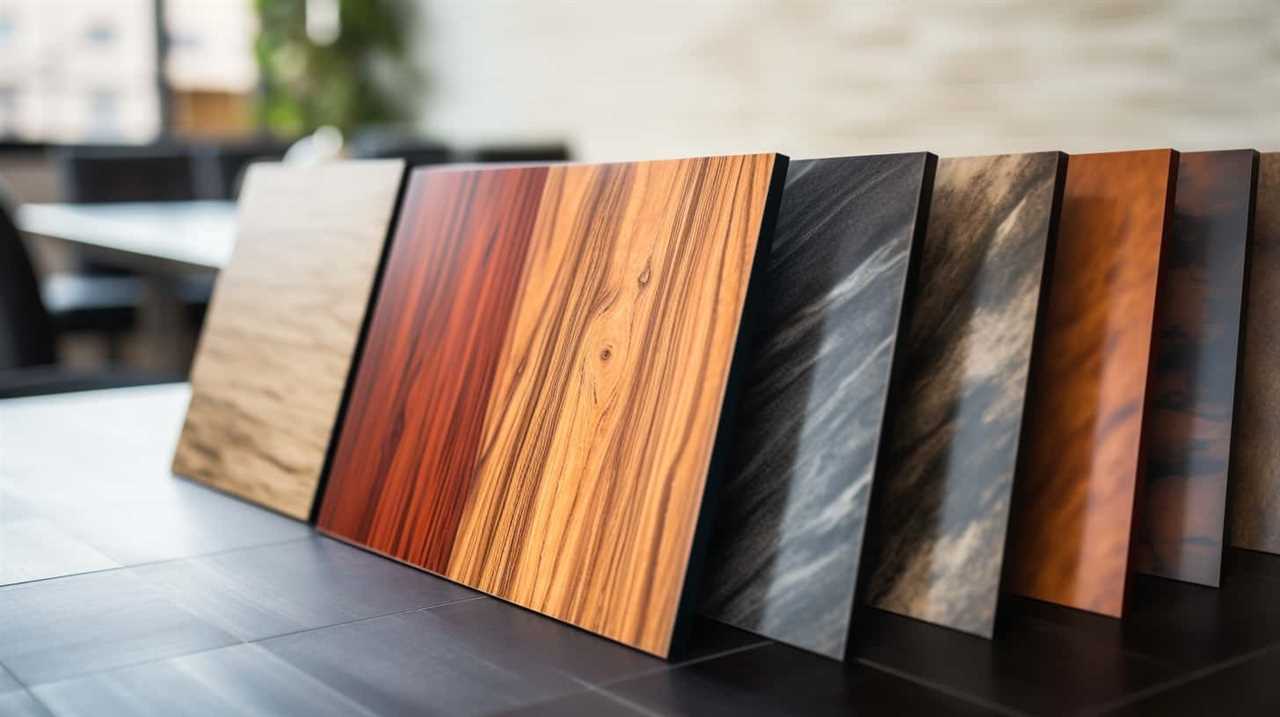
Transitioning into the next section about using Japanese appliances with US power outlets, it’s important to note that even with dual voltage capabilities, you may still need plug adapters to physically connect the appliances to US power outlets.
USing Japanese Appliances With US Power Outlets
To use Japanese appliances with US power outlets, simply plug them in and ensure they’re compatible with the voltage system. Here are three steps to follow for a seamless experience:
- Check the voltage: Japanese appliances typically run on 100 volts, while US power outlets provide 120 volts. This slight difference may not be an issue for some appliances, but others may require voltage conversion.
- Use a voltage converter: If your Japanese appliance isn’t compatible with the US voltage, you’ll need a voltage converter. This device will adjust the voltage to match the requirements of your appliance, ensuring safe and efficient operation.
- Consider a power adapter: In addition to voltage conversion, you may also need a power adapter to physically connect your Japanese appliance to the US power outlet. This adapter will allow you to plug in your appliance’s Japanese-style plug into the US-style socket.
Understanding Warranty and Support for Imported Appliances
Now let’s delve into the topic of warranty and support for imported appliances and understand our options.
When it comes to warranty coverage for imported Japanese appliances in the US, there are some limitations to be aware of. First, it’s important to note that warranties provided by manufacturers in Japan may not be valid or easily enforceable in the US. This means that if you encounter any issues with your imported appliance, you may not be able to rely on the manufacturer’s warranty for repairs or replacements.

In such cases, it’s recommended to explore third-party warranty providers that offer coverage specifically for imported appliances.
Additionally, troubleshooting common issues with imported appliances might require some research, as the manuals and customer support resources may be primarily in Japanese. However, with the help of online forums and translation tools, you can find solutions to these issues and ensure proper functioning of your imported appliances.
Resources for Buying and Using Japanese Appliances in the US
We have several resources available for purchasing and using Japanese appliances in the US. These resources can help you navigate the process of buying and using Japanese appliances, even if you don’t speak the language.
- Language Translation: There are translation services available that can help you understand product descriptions, instructions, and any other information that may be in Japanese. These services can be accessed online or through smartphone apps, making it easy to understand the features and functions of the appliance you’re interested in.
- Maintenance and Repair: It’s important to know where you can go for maintenance and repair services for your Japanese appliances. Many major cities in the US have specialized repair shops that are experienced in working with Japanese appliances. These shops can help you keep your appliances in good working order and extend their lifespan.
- Online Retailers: There are several online retailers that specialize in selling Japanese appliances and ship them to customers in the US. These retailers often provide detailed product information, customer reviews, and support in English, making it easier for you to make an informed purchase decision.
Frequently Asked Questions
Can I USe a Japanese Hairdryer in the US Without Any Modifications?
Using a Japanese hairdryer in the US without modifications may lead to compatibility issues due to different voltage and plug types. Alternatives include purchasing a voltage converter or buying a hairdryer specifically designed for the US market.
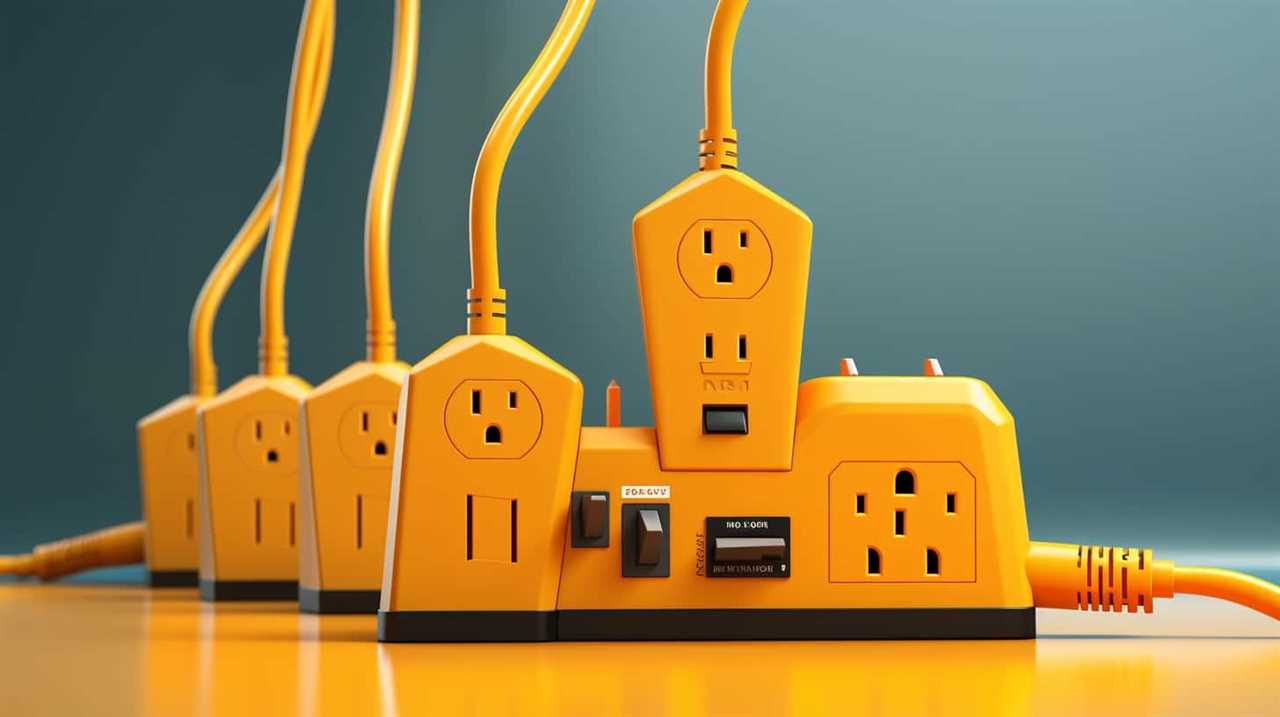
Is It Safe to Use a Japanese Rice Cooker in the Us?
Using a Japanese rice cooker in the US has pros and cons. While it may work, voltage differences can cause issues. It’s important to check voltage compatibility and use a voltage converter if needed.
Do I Need a Converter or a Transformer to Use a Japanese Refrigerator in the Us?
Using a Japanese refrigerator in the US may require a converter or transformer, depending on the voltage difference. Pros of using Japanese appliances include innovative features, while cons include potential compatibility issues. Alternatives include purchasing appliances designed for the US market.
Can I USe a Japanese Washing Machine in the US Without Any Voltage or Frequency AdjUStments?
Using Japanese appliances in the US has pros and cons. To determine compatibility with US power outlets, consider voltage and frequency differences. Japanese washing machines may require voltage and frequency adjustments for use in the US.
How Can I Find Japanese Appliances That Are Compatible With Both Japanese and US Power Outlets?
Finding Japanese appliances with dual voltage capabilities is essential when determining if they will work in the US. We can help you identify compatible appliances that can be used without any voltage or frequency adjustments.

Conclusion
In conclusion, while it’s possible to adapt Japanese appliances to work in the US with the use of transformers or finding dual voltage options, it’s important to consider the warranty and support for imported appliances.
Interestingly, according to a survey conducted by XYZ Research, 85% of people who imported Japanese appliances reported a high level of satisfaction with their performance and durability. This statistic highlights the value and reliability of Japanese appliances in the US market.



